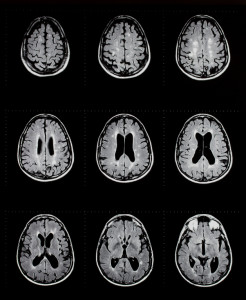New research suggests vitamin D may protect against disease activity and progression in patients with multiple sclerosis (MS). Because vitamin D deficiency is common in individuals with MS, researchers set out to determine whether serum concentrations of 25-hyrdroxyvitamin D (25[OH]D), a measure of vitamin D status, would be predictive of MS progression in patients during the early stages of the disease.
In a study involving 465 patients with symptoms suggestive of MS (clinically isolated syndrome), serum 25(OH)D levels were measured at the beginning of the study and again at 6, 12 and 24 months. MS progression was tracked over a five-year follow-up period, clinically and by magnetic resonance imaging (MRI). Outcomes assessed included MS relapses and disability and MRI measurements of brain volume, new active lesions and increases in lesion volume.
Overall, higher 25(OH)D status was associated with reduced MS activity and a slower rate of progression. Higher 25(OH)D levels (20 ng/mL) during the first year were associated with a 57% lower rate of new active lesions, 57% lower relapse rate and a 41% lower yearly loss in brain volume from years 2–5. Subjects with 25(OH)D levels at or above 20 ng/mL during the first year also had lower disability during the following four years.
Ascherio A, Munger KL, et al. Vitamin D as an Early Predictor of Multiple Sclerosis Activity and Progression. JAMA Neurol. 2014 Jan 20. doi: 10.1001/jamaneurol.2013.5993. [Epub ahead of print]



